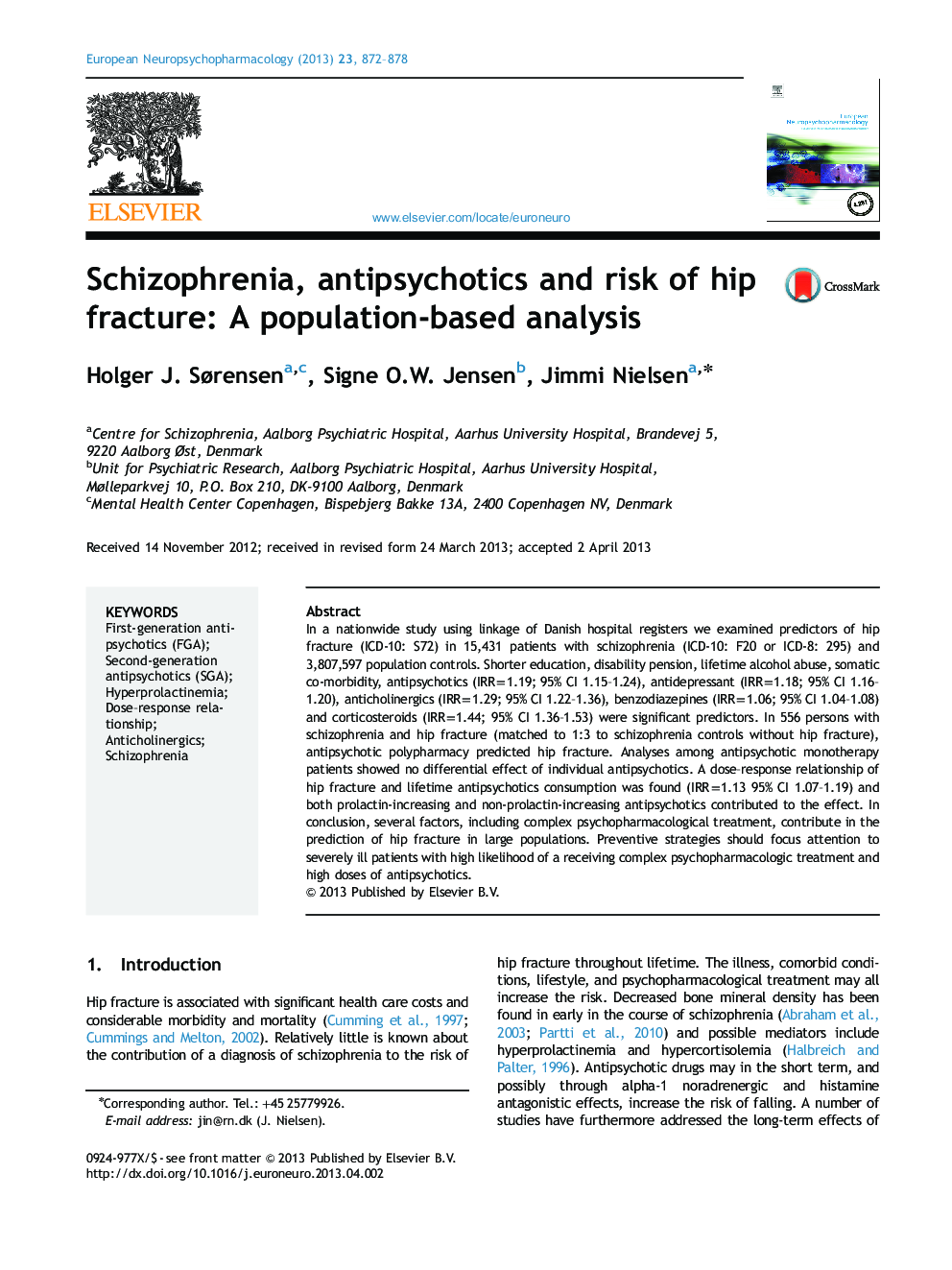| کد مقاله | کد نشریه | سال انتشار | مقاله انگلیسی | نسخه تمام متن |
|---|---|---|---|---|
| 319633 | 539532 | 2013 | 7 صفحه PDF | دانلود رایگان |

In a nationwide study using linkage of Danish hospital registers we examined predictors of hip fracture (ICD-10: S72) in 15,431 patients with schizophrenia (ICD-10: F20 or ICD-8: 295) and 3,807,597 population controls. Shorter education, disability pension, lifetime alcohol abuse, somatic co-morbidity, antipsychotics (IRR=1.19; 95% CI 1.15–1.24), antidepressant (IRR=1.18; 95% CI 1.16–1.20), anticholinergics (IRR=1.29; 95% CI 1.22–1.36), benzodiazepines (IRR=1.06; 95% CI 1.04–1.08) and corticosteroids (IRR=1.44; 95% CI 1.36–1.53) were significant predictors. In 556 persons with schizophrenia and hip fracture (matched to 1:3 to schizophrenia controls without hip fracture), antipsychotic polypharmacy predicted hip fracture. Analyses among antipsychotic monotherapy patients showed no differential effect of individual antipsychotics. A dose–response relationship of hip fracture and lifetime antipsychotics consumption was found (IRR=1.13 95% CI 1.07–1.19) and both prolactin-increasing and non-prolactin-increasing antipsychotics contributed to the effect. In conclusion, several factors, including complex psychopharmacological treatment, contribute in the prediction of hip fracture in large populations. Preventive strategies should focus attention to severely ill patients with high likelihood of a receiving complex psychopharmacologic treatment and high doses of antipsychotics.
Journal: European Neuropsychopharmacology - Volume 23, Issue 8, August 2013, Pages 872–878